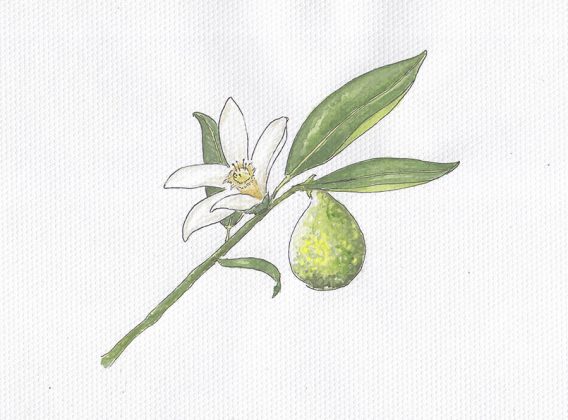Anyone with a passing interest in gin will be well aware of the global renaissance in gin distillation, with the use of new locations, production methods and flavor profiles. As the quantity and range of gin increases, it is to be expected that new styles and categories will emerge and move the world of gin into the future. Categories such as Aged Gin, Old Tom and Navy Gin are well established, but how does a new gin category come about?
For the purpose of this article, the focus is on stylistic categories rather than those that are defined solely by the production method employed, such as Distilled Gin or London Gin. Existing stylistic categories include Classic and Contemporary; the latter being an umbrella term for less juniper-forward expressions, such as New Western Gin, New American Dry, New Wave Gin or 21st Century Gin.
More recently, Signature Botanical Gin has been identified as a new category. These are gins that focus on a particular botanical or flavor, and prominently state this on the label. They are flavored exclusively through distillation as opposed to being steeped and sweetened like sloe gin is. The result is a spirit that still tastes of gin, but that puts an extra focus on the signature component. Examples have existed for at least 10 years, but recent times have seen a great increase in distilleries releasing products of this style.
Examples include:
Knockeen Hills Heather and Knockeen Hills Elderflower Gins
Amethyst Lavender Gin
Black Button Lilac Gin
McQueen Mocha Gin
Curio Spirits Rock Samphire Gin
Another candidate for a new gin style comes from “down under”—Australia. In 2016, there are already more than 30 distilleries making gin in Australia, including six on the island state of Tasmania.
Many of these gins embrace the terroir (capturing some of the character of the distillery’s surroundings in the bottle) via their choice of botanicals or base spirit. Botanical terroir is used in many other gins across the world—St. George Spirits Terroir Gin is a notable example—but is Australian terroir different enough to set it apart?
A common technique used by Australian distillers is to make a gin exclusively via distillation incorporating a mix of classic gin botanicals such as juniper, coriander and angelica, and then add in some native Australian choices.
The flora and fauna of Australia are unique. More than 80% of species are native only to the Australian continent. The separation of the mainland from nearby land masses 8 to 10 thousand years ago was a major contributor to this unique situation.
The trend in the use of native botanicals in gin comes at a time when the bush food movement—the use of native species in cooking—is on the rise. The bush food movement began in the 1970s, but has really found favor in the 21st century. Popular bush foods include the quandong, lemon myrtle, bush tomato, macadamia nut and finger lime—all of which are also used in gins.
James Young of Old Young’s Distillery in the Swan Valley, Western Australia, makes a Six Season Gin in addition to his 1827, 1829, and Old B.A.G. (Barrel-Aged) Gins. Six Seasons is inspired by the fact that the indigenous people of Australia recognize six seasons, as opposed to the four in the United States and Europe. The two additional seasons are also recognized by Dr. Tim Entwisle, director of the Royal Botanic Gardens in Melbourne, who describes them as “Sprinter” and “Sprummer.”
Six Seasons Gin was created in collaboration with Paul “Yoda” Iskov of pop-up bush-food dining company Fervor, and Dale Tilbrook of Maalinup Aboriginal Gallery. The spirit has a botanical foundation of juniper, coriander seed and angelica root, and then has one botanical from each of the seasons: Lemon myrtle, juniper myrtle, sea parsley, bush mint, thryptomene and desert lime.
Like many distillers, Old Young’s gets their juniper from southeast Europe, which has ideal growing conditions for common juniper. This choice of juniper also helps the spirit to maintain a recognizable juniper character.
One distiller, Kangaroo Island Spirits, does use native juniper. Their KIS Wild Gin uses Myoporum insulare, aka common boobialla, which adds a citrusy and creamy note.
The Hypothesis
Bush Gin: A gin produced exclusively through distillation and is made using a foundation of classic botanicals, but is augmented with botanicals endemic to Australia.
Such a style is likely to have come about due to the unique biogeography of Australia, the rise of the bush food movement and limitations in sourcing some botanicals due to Australia’s geographic isolation.
On a more lighthearted note, the strict adherence to the London Gin production criteria may in some ways be a way to prove that Australians can make gin just as well as the pommes.
The Next Steps
The theoretical case for an “Australian” or “Bush” gin style is set out above, but this needs to be investigated in a more practical way. To do this, a tasting of a wide variety of Australian gins should be conducted to see if there is a common characteristic that ties them together. This characteristic needs to be significant enough that it is of practical use when classifying gin and would have meaning to the wider world of both producers and consumers.
A key part of this tasting would be the discussion among independent experts in the gin industry to see if any consensus can be reached. The results would then be written up in a paper and shared in Distiller magazine.
New theories about potential categories in spirits do not always lead to their adoption; in the author’s limited experience, there have been as many successes as failures, but one point is hard to argue against: The distillers of Australia are certainly making the most of their local resources and producing some exciting and delicious gin in the process.










